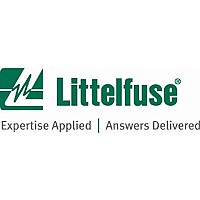P0900SCMC Littelfuse / Teccor Sidactor(R) Product, P0900SCMC Datasheet - Page 134

P0900SCMC
Manufacturer Part Number
P0900SCMC
Description
SIDACTOR MC BI 75V 400A DO-214AA
Manufacturer
Littelfuse / Teccor Sidactor(R) Product
Series
SIDACtor® SC(MC)r
Datasheet
1.P0080SCMC.pdf
(212 pages)
Specifications of P0900SCMC
Voltage - Breakover
98V
Voltage - Off State
75V
Voltage - On State
5V
Current - Peak Pulse (8 X 20µs)
400A
Current - Peak Pulse (10 X 1000µs)
100A
Current - Hold (ih)
150mA
Number Of Elements
1
Capacitance
70pF
Package / Case
DO-214AA, SMB
Lead Free Status / RoHS Status
Contains lead / RoHS non-compliant
Available stocks
Company
Part Number
Manufacturer
Quantity
Price
Company:
Part Number:
P0900SCMC
Manufacturer:
TECCOR
Quantity:
54 000
Company:
Part Number:
P0900SCMCL
Manufacturer:
Littelfu
Quantity:
150 000
Company:
Part Number:
P0900SCMCLRP
Manufacturer:
Littelfu
Quantity:
73 500
- Current page: 134 of 212
- Download datasheet (2Mb)
ITU-T K.20 and K.21
ITU-T K.20 and K.21
http://www.teccor.com
+1 972-580-7777
Although the International Telecommunication Union (ITU) does not have the authority to
legislate that organizations follow their recommendations, their standards are recognized
throughout Europe and the Far East.
ITU-T, the Telecommunication Standardization Sector of the ITU, developed fundamental
testing methods that cover various environmental conditions to help predict the survivability
of network and customer-based switching equipment. The testing methods cover the
following conditions:
• Surges due to lightning strikes on or near twisted pair and plant equipment (excluding a
• Short-term induction of AC voltage from adjacent power lines or railway systems
• Direct contact between telecommunication lines and power lines (often referred to as
Two ITU-T standards apply for most telecommunications equipment connected to the
network:
• ITU-T K.20
• ITU-T K.21
ITU-T K.20 is primarily for switching equipment powered by the central office; however, for
complex subscriber equipment, test administrators may choose either K.20 or K.21,
depending on which is deemed most appropriate.
Note: Both standards are intended to address equipment reliability versus equipment
K.21 covers telecommunication equipment installed in customer premises. Equipment
submitted under these requirements must meet one of two levels: basic or enhanced.
Guidelines for determining under which level the equipment under test (EUT) falls can be
found in ITU-T K.11, but note that the final authority rests with the test administrator.
ITU-T K.44 describes the test conditions used in K.20 and K.21.
ITU-T defines the following acceptance criteria:
• Criterion A states that equipment shall withstand the test without damage and shall
• Criterion B states that a fire hazard shall not occur as a result of the tests. Any damage
Table 4.10 shows the lightning surge test conditions for ITU K.20. Figure 4.3 shows the
connection schematic for the lightning surge tests. Table 4.11 shows the power cross test
conditions for ITU K.20. Figure 4.4 shows the connection schematic for the power cross
tests. Table 4.12 and Table 4.13 show the same test conditions respectively for ITU K.21.
direct strike)
AC power cross)
operate properly after the test. It is not required to operate correctly during the test.
shall be confined to a small part of the equipment.
safety. For specific concerns regarding equipment safety, research and follow
national standards for each country in which the equipment is intended for use.
4 - 10
SIDACtor
®
Data Book and Design Guide
© 2002 Teccor Electronics
Related parts for P0900SCMC
Image
Part Number
Description
Manufacturer
Datasheet
Request
R

Part Number:
Description:
SIDACTOR BIDIR 6V 150A DO-214AA
Manufacturer:
Littelfuse / Teccor Sidactor(R) Product
Datasheet:

Part Number:
Description:
SIDACTOR BI 58V 150A DO-214AA
Manufacturer:
Littelfuse / Teccor Sidactor(R) Product
Datasheet:

Part Number:
Description:
SIDACTOR BI 65V 150A DO-214AA
Manufacturer:
Littelfuse / Teccor Sidactor(R) Product
Datasheet:

Part Number:
Description:
SIDACTOR BI 140V 150A DO-214AA
Manufacturer:
Littelfuse / Teccor Sidactor(R) Product
Datasheet:

Part Number:
Description:
SIDACTOR BI 75V 150A DO-214AA
Manufacturer:
Littelfuse / Teccor Sidactor(R) Product
Datasheet:

Part Number:
Description:
SIDACTOR BI 190V 150A DO-214
Manufacturer:
Littelfuse / Teccor Sidactor(R) Product
Datasheet:

Part Number:
Description:
SIDACTOR BI 220V 150A DO-214AA
Manufacturer:
Littelfuse / Teccor Sidactor(R) Product
Datasheet:

Part Number:
Description:
SIDACTOR BI 90V 150A DO-214AA
Manufacturer:
Littelfuse / Teccor Sidactor(R) Product
Datasheet:

Part Number:
Description:
SIDACTOR BI 6V 250A DO-214AA
Manufacturer:
Littelfuse / Teccor Sidactor(R) Product
Datasheet:

Part Number:
Description:
SIDACTOR BI 25V 250A DO-214AA
Manufacturer:
Littelfuse / Teccor Sidactor(R) Product
Datasheet:

Part Number:
Description:
SIDACTOR BI 6V 250A DO-214AA
Manufacturer:
Littelfuse / Teccor Sidactor(R) Product
Datasheet:

Part Number:
Description:
SIDACTOR BI 275V 250A DO-214AA
Manufacturer:
Littelfuse / Teccor Sidactor(R) Product
Datasheet:

Part Number:
Description:
SIDACTOR BI 190V 250A DO-214
Manufacturer:
Littelfuse / Teccor Sidactor(R) Product
Datasheet:

Part Number:
Description:
SIDACTOR MC BI 25V 400A DO-214AA
Manufacturer:
Littelfuse / Teccor Sidactor(R) Product
Datasheet:

Part Number:
Description:
SIDACTOR BI 25V 150A DO-214AA
Manufacturer:
Littelfuse / Teccor Sidactor(R) Product
Datasheet:











